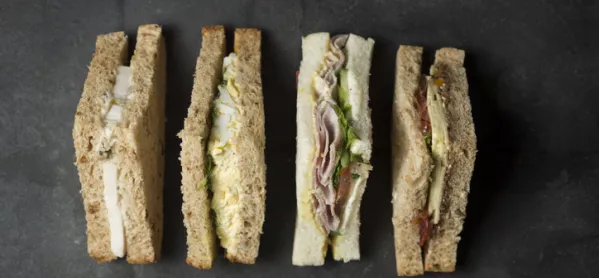When marking creative writing last week, I came across something completely new: a speech on sandwiches. Did you know that there’s a big difference between “wet” sandwiches and ‘“crazy cold” sandwiches? It was inspiring. Honestly.
Stay with me, here.
I know what you’re thinking: here comes another book-loving, blog-writing English teacher who’s sworn to the teachers’ sword to say how much she loves reading her learners’ work. There is some truth to that, but you know as well as I do how marking exam questions can be a painful task after you’ve read 34 of the same response.
Covid: What won’t I miss about remote learning? Student trolls
Return to college: The day in pictures
Watch: Leaders talk about opening up colleges
For our learners, writing serves a multitude of unconscious purposes: processing emotions, communication, escapism. Whether they explicitly love it or loathe it, after a couple of years of teaching GCSE English, writing skills have become my favourite thing to teach, as you never know what you’re going to read next. From battling with killer ducks in a fight to save the empire, to observing Cambridge - on wheels - preying on other cities searching to take down all the Greggs in the area.
If there is a piece of writing that I can guarantee gets an eye roll every single time, it’s a speech. I try to avoid the classics, and instead I look for something that not only shows personality, but something they will be able to relate to, quickly.
Have you seen “To this day...for the bullied and beautiful” by Shane Koyczan? He talks about his negative experiences while also engaging his audience immediately through his use of humour. The hook is his story about thinking that a karate chop and a pork chop were the same thing, while expressing a powerful story of bullying.
Creative writing: Give students ownership
I encourage my learners to showcase themselves through their work and to be unique. On paper, they see that as a challenge, but we know that our learners are full of banter and witticism. Rather than deciding the topic myself, I hand the ownership over to them and ask them to write something that they are passionate about. I give a suggestion of topics including food, video games and celebrities (my attempts to be “down with the kids”) but what they really want to talk about is often simpler than that. In this case, a declaration of love for (and a firm argument for the superiority of) leftover sandwiches.
I opened up this monologue and grinned. ”What is the most important question of all?” - what confidence, I thought. This learner had listened carefully to the hyperbolic tone of Shane Koyczan and had clearly connected with it. The most powerful element of this story is that my learner is an elective mute. I felt that I had finally heard his voice through his writing, through his humour and sarcasm: “Go crazy if you want and make a cold sandwich, throw in some ice cream, if you dare.”
So, who really learned something in this lesson? Was it the learner? Hopefully. But I believe I was the learner in this case - giving learners the freedom to express themselves on paper however they see best. The freedom to not be judged and be silly, the freedom to express their sarcasm and wit. This is the most successful way of enabling that unique voice to shine through on paper, in their writing.
I also learned that a “soup sandwich” (wet sandwich) is something I will never be tempted to try.
Hollie Barnes is an English teacher at Cambridge Regional College
